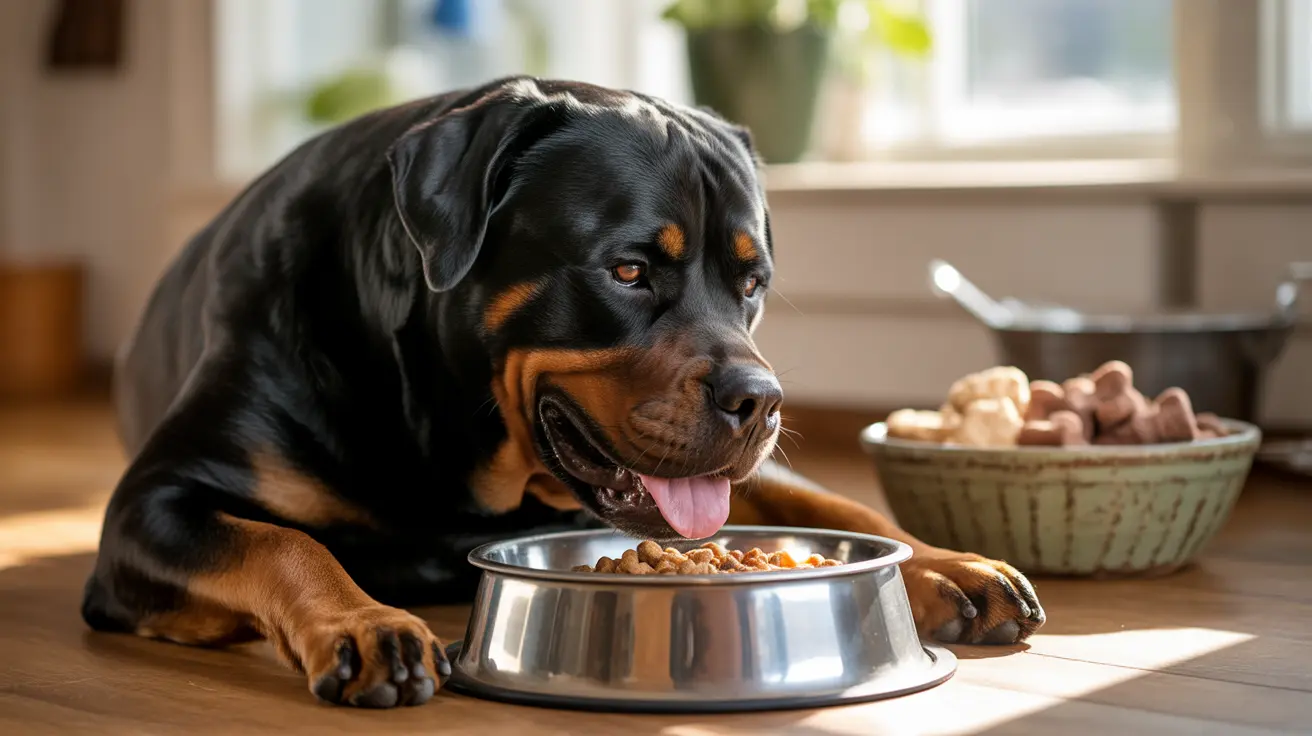Why Feeding Dogs Before 5 PM Is Essential for Their Health and Well-being
As a responsible dog owner, you've likely wondered about the optimal timing for your furry friend's meals. While many pet parents focus on what to feed their dogs, the question of when to feed them is equally important for their overall health and well-being. The practice of feeding dogs before 5 PM has gained significant attention among veterinarians and canine nutrition experts as a key strategy for promoting healthy digestion, establishing beneficial routines, and preventing serious health complications.
Research and veterinary experience consistently show that meal timing plays a crucial role in your dog's digestive health, sleep quality, and overall comfort. Dogs have a simple stomach anatomy similar to humans, and once full, their stomachs empty within a few hours as food moves to the small intestine. After 8 to 10 hours, an empty stomach signals the brain to stimulate hunger, making the timing of meals critical for maintaining their natural biological rhythms.
Understanding why feeding dogs before 5 PM matters can transform your pet's health outcomes and strengthen the bond between you and your canine companion. This comprehensive guide will explore the science behind optimal feeding times, provide practical scheduling recommendations, and help you create a feeding routine that supports your dog's long-term health and happiness.
The Science Behind Optimal Feeding Times for Dogs
Dogs require 20 to 24 hours to completely digest a meal, making the timing of their food intake crucial for proper digestive function. The digestive process begins immediately after eating, with dogs typically needing to relieve themselves within 10 to 15 minutes of consuming food. This natural biological response makes feeding timing an essential component of both digestive health and house training success.
The canine digestive system operates on predictable cycles that align with their natural circadian rhythms. Dogs have a 4-6 hour digestion time, during which their stomachs work to break down and process food before it moves to the small intestine. Hunger signals typically begin approximately 8 hours after the stomach has emptied, creating a natural feeding window that works best when aligned with early evening schedules.
Feeding dogs before 5 PM allows sufficient time for the initial digestion process to occur before bedtime, reducing the likelihood of digestive discomfort during sleep hours. This timing also ensures that your dog's system can process the meal efficiently without the complications that can arise from late-night feeding, such as disrupted sleep patterns and increased nighttime bathroom needs.
Preventing Gastric Dilatation-Volvulus Through Proper Timing
One of the most compelling reasons for feeding dogs before 5 PM relates to preventing Gastric Dilatation-Volvulus (GDV), a serious and life-threatening condition where the stomach becomes swollen and twisted. This condition is more commonly seen in large breeds and can be directly influenced by feeding timing and exercise schedules.
GDV symptoms include a swollen stomach, increased heartbeat, harsh breathing, drooling, nausea, and vomiting. The condition requires immediate veterinary intervention, often including intravenous fluids and emergency surgery. The risk of GDV significantly increases when dogs are fed large meals close to exercise or when their feeding schedule doesn't allow adequate digestion time before physical activity.
By establishing a feeding schedule that concludes before 5 PM, dog owners create a natural buffer zone that allows for proper digestion before evening walks and bedtime routines. This timing helps prevent the dangerous combination of undigested food and physical activity that can contribute to gastric torsion development.
Age-Specific Feeding Schedule Recommendations
Puppies (6 weeks to 12 months)
Puppies have unique nutritional needs and require more frequent feeding schedules due to their rapid growth and high energy requirements. For puppies aged 6-12 weeks, veterinarians recommend four feedings per day using a diet formulated for normal development. A typical puppy schedule might include breakfast at 7:00 a.m., midday meal at 12:00 p.m., evening snack at 4:30 p.m., and dinner at 8:00 p.m.
The feeding portion formula for puppies follows the rule of 20g per kg of body weight per day, divided into equal portions. For example, a 6kg puppy would receive 120g of food divided into four meals throughout the day. As puppies mature from 3-6 months, feeding frequency can be reduced to three times per day, and from 6-12 months, they can transition to two larger meals per day.
Adult Dogs (1 year and older)
Adult dogs thrive on a consistent two-meal schedule with approximately 10-12 hours between feedings. The ideal adult dog feeding schedule includes a morning meal around 8:00 a.m. and an evening meal before 5:00 p.m., allowing adequate digestion time before sleep and establishing predictable bathroom schedules.
This schedule aligns with the natural 8-hour hunger cycle that occurs after the stomach has completely emptied, ensuring dogs receive nutrition when their bodies naturally expect it while avoiding the complications associated with late-night feeding.
Health Benefits of Early Evening Feeding
Feeding dogs before 5 PM provides numerous health advantages that extend beyond simple convenience. Early feeding allows the digestive system to process food efficiently during active daylight hours when metabolic processes are naturally optimized. This timing supports stable blood sugar levels and helps regulate metabolism throughout the day.
Dogs that eat their final meal before 5 PM experience improved sleep quality, as their digestive systems aren't working overtime during rest hours. This schedule also reduces the likelihood of nighttime bathroom emergencies, creating better sleep patterns for both dogs and their owners. Additionally, early feeding can help prevent weight gain that often occurs when dogs consume large meals late in the day without adequate activity to burn the consumed calories.
The routine aspect of early feeding also provides psychological benefits for dogs, as they are creatures of habit who thrive on predictability. A consistent feeding schedule helps dogs cope with household changes and provides security through established routines.
Special Considerations for Different Dog Types
Large Breeds and Senior Dogs
Large breeds require particular attention to feeding schedules due to their increased risk of gastric torsion and bloat. These dogs benefit significantly from elevated feeding stations, which can improve the eating experience and support proper digestion. The physical setup of feeding areas becomes especially important for large dogs, as proper positioning can reduce the amount of air swallowed during eating.
Senior dogs may have different digestive capabilities and may benefit from smaller, more frequent meals rather than two large servings. However, maintaining the before-5-PM schedule remains beneficial for preventing nighttime digestive issues and supporting quality sleep in older dogs who may already experience sleep disturbances.
Dogs with Medical Conditions
Dogs with specific health issues such as diabetes, gastroesophageal reflux disease, or sensitive stomachs may require modified feeding schedules while still benefiting from the before-5-PM principle. These dogs often need food at specific times or medication administered with meals, making a set meal schedule particularly important for managing their conditions effectively.
For dogs with medical conditions requiring special consideration, consultation with a veterinarian is essential to develop a feeding plan that accommodates both their health needs and the benefits of early evening meal timing.
Creating the Ideal Feeding Environment
The physical setup of your dog's feeding area plays a crucial role in supporting healthy digestion and positive feeding experiences. Keep the feeding place consistent and quiet, away from high-traffic areas where your dog might feel rushed or stressed while eating. For large breeds, elevated feeding stations can improve posture during eating and reduce the amount of air swallowed with food.
Establishing set meal durations helps prevent prolonged access to food, which can lead to grazing behaviors and overeating. Most dogs should finish their meals within 30 minutes, after which any remaining food should be removed to maintain the structure of scheduled feeding times.
Fresh water should be available at all times, regardless of feeding schedule, to support proper digestion and overall health. The combination of structured meal times and constant water access creates an optimal environment for digestive health.
Transitioning to Earlier Feeding Times
If your current feeding schedule extends past 5 PM, transitioning to earlier meal times should be done gradually to avoid digestive upset. Begin by moving meal times earlier by 15-30 minutes each day until you reach the desired schedule. This gradual approach allows your dog's internal clock to adjust naturally to the new routine.
During the transition period, monitor your dog for any signs of digestive discomfort or changes in bathroom habits. Most dogs adapt quickly to new feeding schedules, especially when the change is implemented consistently and gradually.
For dogs accustomed to grazing or free-choice feeding, the transition to scheduled meals may take longer but provides significant long-term benefits. Measure daily portions and offer them at regular times, creating expectations around meal times while maintaining proper nutritional intake.
Frequently Asked Questions
- Q: What if my work schedule makes it impossible to feed my dog before 5 PM?
If your schedule absolutely prevents before-5-PM feeding, focus on providing smaller, more frequent meals throughout the day and ensure at least 2-3 hours between the last meal and bedtime. Consider lighter snacks instead of heavy meals if late feeding is unavoidable, and monitor your dog for any signs of digestive discomfort.
- Q: Do puppies follow the same before-5-PM rule as adult dogs?
Puppies require more frequent feeding (3-4 times daily) due to their high energy needs and smaller stomachs. While their last meal may occur after 5 PM, it should still allow adequate digestion time before sleep. Consult your veterinarian for the best puppy feeding schedule based on age and size.
- Q: How long should I wait between my dog's last meal and their evening walk?
Wait at least 30-45 minutes after feeding before engaging in vigorous exercise to prevent gastric dilatation-volvulus (GDV). However, a gentle walk 15-20 minutes after eating can actually help with digestion and house training, as dogs typically need to relieve themselves shortly after meals.
- Q: Can I give my dog treats after 5 PM if their meal was earlier?
Small, healthy treats are generally acceptable after the main meal, but avoid large quantities of food late in the evening. Training treats or small nutritious snacks won't significantly impact the benefits of earlier meal timing.
- Q: What are the signs that my current feeding schedule isn't working?
Watch for digestive discomfort, irregular bathroom habits, sleep disturbances, bloating, excessive nighttime activity, or changes in appetite. Any break in normal eating habits can indicate illness and should prompt a veterinary consultation.
- Q: Do all dog breeds benefit equally from before-5-PM feeding?
While all dogs can benefit from earlier feeding times, large breeds are particularly at risk for gastric torsion and bloat, making proper meal timing especially crucial. Small breeds and puppies may have more flexibility but still benefit from the digestive and sleep advantages of earlier feeding.
- Q: How do I know if my dog is getting enough nutrition with an earlier feeding schedule?
Monitor your dog's energy levels, weight, coat condition, and overall health. Consult with your veterinarian to ensure your dog's nutritional needs are being met regardless of feeding time adjustments. Regular check-ups can help track whether the feeding schedule supports optimal health.
Conclusion
Feeding dogs before 5 PM represents more than just a scheduling preference—it's a science-based approach to supporting optimal canine health and well-being. This practice allows adequate time for proper digestion, reduces the risk of serious conditions like gastric torsion, promotes better sleep quality, and establishes beneficial routines that dogs naturally crave. The evidence consistently shows that meal timing plays a crucial role in preventing digestive issues, supporting natural biological rhythms, and creating predictable schedules that benefit both dogs and their owners.
By implementing an earlier feeding schedule, you're investing in your dog's long-term health while creating a structured routine that enhances the bond between you and your canine companion. Remember that transitioning to new feeding times should be done gradually, and dogs with special health needs may require customized approaches developed in consultation with veterinary professionals. The commitment to feeding dogs before 5 PM ultimately reflects the dedication to providing comprehensive care that addresses not just nutrition, but the timing and environment that optimize your dog's digestive health and overall quality of life.






